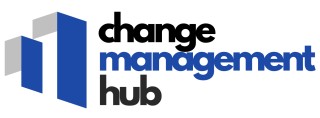Understanding System Changeover
Mastering the Initial Steps of System Changeover
Embarking on a system changeover involves transitioning from an existing set of systems to a new configuration, often reflecting evolving organizational needs. This process is deeply rooted in meticulous planning and strategically aligns with management’s objectives to ensure seamless integration. The method chosen can significantly impact long-term efficiencies across the organization. For any organization, understanding why a system changeover is essential before embarking on it is paramount. Often, these transitions are prompted by needs such as enhanced performance, the introduction of advanced data management systems, and improved employee experience. The heart of any system changeover is its potential benefits—the allure of better performance management, streamlined hrms integration, and efficient payroll software are often the drivers. To maintain these advantages, it’s crucial to anticipate challenges often encountered during the changeover process. These challenges can range from technical hiccups to resistance from employees, making it essential to lay out a solid framework for transition. Before moving forward, the organization needs to decide on a changeover approach best suited to its unique needs. This could be a phased implementation allowing departments to gradually adjust, or a parallel running system that ensures continuity while new systems are tested. Ultimately, the objectives set at the outset and the path chosen will profoundly influence not only the immediate success of the system changeover but also the future adaptability of the organization. The process, though time-consuming, can significantly contribute to a more dynamic and capable organizational system. For those navigating these complexities, it’s beneficial to explore further insights into workplace transformation strategies covered in this navigating the challenges of workplace transformation guide.Challenges in System Changeover
Overcoming the Obstacles in Changeover
Embarking on a system changeover within any organization can present a multitude of challenges that need careful management to ensure a smooth transition. Each obstacle encountered can have significant implications on the overall performance and employee experience. Thus, understanding these challenges is crucial to address them effectively.
The primary complexity in a changeover process is the integration of new systems with existing data management protocols. Ensuring compatibility and seamless data transfer can be time consuming and often involves dealing with outdated systems. Organizations must safeguard sensitive data and comply with the privacy policy regulations throughout this process.
Another significant challenge lies in the resistance to change from employees. When a new hrms or payroll software is introduced, employees may find the transition disruptive. This can affect their performance and overall morale if not managed with effective communication and training.
System changeovers also require appropriate allocation of resources across departments. This includes not only financial investments but also the right human resources to drive the implementation. A phased implementation approach or parallel running of old and new systems can mitigate potential disruptions, but both are resource-intensive strategies that require meticulous planning.
Addressing these complexities is essential for successful system changeover. Creating a comprehensive plan that anticipates possible obstacles can guide the organization towards a more efficient and less disruptive transition. For more insights on managing organizational transformation, check out effective strategies for managing organizational transformation.
Strategies for Successful System Changeover
Crafting a Roadmap for Seamless Transitions
In the complex universe of system changeovers, a well-structured approach is imperative to ensure a smooth transition. Here are several strategies to facilitate a successful system changeover, enhancing both the employee experience and organizational efficiency. Assessment and PlanningA comprehensive assessment of the current systems and processes is a critical starting point. This phase must include an evaluation of existing data management practices and employee feedback to identify gaps. By understanding these elements, organizations can tailor the system changeover to address specific pain points, ensuring that the new system aligns with organizational goals and employee needs. Bolstering Communication and Training
Effective communication across all departments can avoid misunderstanding and resistance during the transition. Regular updates about the changeover process help to keep employees informed and engaged. Providing extensive training on the new systems empowers employees and enhances their performance, resulting in a more successful system implementation. Phased Implementation vs. Direct Changeover
Organizations must decide between a phased implementation or a direct changeover. While a phased approach may be less disruptive, allowing employees time to adapt gradually, a direct changeover can lead to quicker realization of benefits. Choosing the right method depends largely on the organization’s capacity to handle change and the nature of the systems involved. Advocating for Robust Support Systems
Dedicated support throughout the transition period is crucial for a seamless experience. This includes both technical support and HRMS enhancements to address employee concerns and ease the shift in workflows. Encouraging team collaboration during the system changeover promotes a culture of support, ensuring that employees feel valued and involved. Commitment to Ongoing Evaluation
After the implementation, continuous monitoring is essential to measure the impact of the changeover on organizational performance. Utilizing metrics such as system uptime, data integrity, and employee satisfaction can provide insights into the success of the transition and highlight areas needing improvement. By adopting these strategies, organizations can navigate the intricacies of system changeovers effectively. To further enhance these efforts, consider fostering a gentler workplace environment as part of your change management strategy. This can significantly contribute to a smoother transition, optimizing both employee experience and organizational outcomes.
Role of Leadership in System Changeover
Leadership as a Beacon in Transition
In the ever-evolving landscape of system changeovers, leadership stands as a cornerstone in ensuring a smooth transition. When an organization embarks on implementing a new system, leaders must adopt a proactive approach that fosters a positive employee experience and aligns with the organization's overall objectives. Understanding the significance of guiding the change process, leaders can significantly impact the successful implementation of the system. Leaders play a crucial role by communicating the vision and the benefits of the system changeover. This communication should emphasize not only on the technical advantages and data management improvements but also how these changes will enhance the daily operations and employee engagement. By explaining both the short-term and long-term goals, leaders can empower employees to embrace the change management process. Among the challenges faced during a changeover is the resistance from various departments within the organization. Leaders must therefore engage with HRMS and other teams early on to address concerns and ensure their participation. By involving key stakeholders in discussions, leaders can build a collaborative environment where each department feels invested in the process. Furthermore, leaders should oversee the phased implementation of the system to minimize disruption. For instance, they might endorse a parallel running approach where the existing system operates alongside the new one until the changeover system is fully optimized. This strategy ensures that any potential pitfalls do not compromise the organization’s performance. Leaders are also responsible for fostering a culture of learning and adaptation, especially when employees are adjusting to new software and tools. By supporting training initiatives and offering time for skill development, leaders can mitigate concerns and prepare employees for the ensuing transition. Lastly, leadership must prioritize the creation of a robust privacy policy to safeguard employee and data privacy during the system changeover. By doing so, they can promote trust and confidence among employees, leading to a better performance overall. In essence, effective leadership is critical in guiding an organization through the complexities of a system changeover. By being transparent, supportive, and strategic, leaders can ensure not only the success of the changeover process but also bolster the organization's future resilience.Technology and System Changeover
Embracing Technological Tools
In the realm of system changeovers, technology plays a pivotal role in ensuring a smooth transition. Organizations often rely on advanced software solutions to manage the complexities of system changeovers. Implementing system tools such as HRMS and payroll software can significantly enhance the employee experience by streamlining processes and improving data management. These tools not only automate repetitive tasks but also provide real-time data insights, which are crucial for better decision-making.
Phased vs. Direct Changeover
The choice between a phased implementation and a direct changeover is critical in the system changeover process. A phased approach allows organizations to gradually transition, which can be less disruptive and time-consuming. It also enables departments to adapt to new systems at their own pace, ensuring a smoother transition. On the other hand, a direct changeover might be suitable for organizations looking for immediate benefits, but it requires meticulous planning to avoid potential pitfalls.
Ensuring Data Privacy and Security
With the integration of new systems, ensuring data privacy and security becomes paramount. Organizations must have a robust privacy policy in place to protect sensitive information during the changeover process. This involves implementing strong data encryption and access controls to safeguard employee and organizational data. Regular audits and compliance checks are also essential to maintain trust and credibility.
Enhancing Employee Performance
Technology not only facilitates the changeover process but also plays a crucial role in enhancing employee performance. Performance management tools integrated into new systems can provide valuable feedback and insights, helping employees align their goals with organizational objectives. This alignment can lead to improved productivity and overall performance, making the changeover process more successful.
Overcoming Challenges with Technology
Despite the benefits, technology can also present challenges during system changeovers. It's essential to address these challenges proactively to ensure a successful system transition. Training programs can help employees become familiar with new systems, reducing resistance to change. Additionally, having a dedicated support team can assist in troubleshooting issues, ensuring a seamless implementation process.





